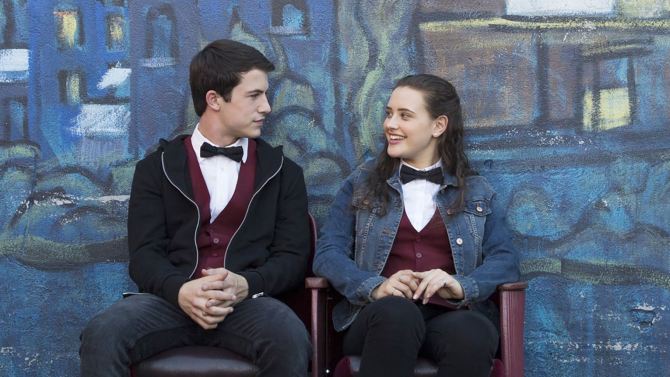
In late March, the Netflix series adaptation of the novel “13 Reasons Why” by Jay Asher was released to the world. This much-anticipated series consists of 13 episodes, each lasting approximately an hour, and health care professionals say they are worried about the impact the show will have on vulnerable teens.
The show follows 17-year-old high school student Hannah Baker, played by actress Katherine Langford, who decides to take her own life. But before she does, she records 13 tapes of herself, each explaining the people and reasons why she makes her fatal decision. Clay Jensen, played by actor Dylan Minnette, finds a package by his front door with these tapes inside. He listens to these tapes and attempts to solve the mystery of Baker’s suicide.
This show doesn’t just talk about the difficult issue of teen suicide, even though it is a central motif, but also tackles the issues of sexual assault, alcohol and drug use among teens, and cyberbullying. These topics are not easy to capture in film, but both creator Brian Yorkey and executive producer Selena Gomez do a solid job of integrating these issues into realistic scenarios that show how challenges can build up in a teen’s life.
To the show’s credit, the issues discussed in “13 Reasons Why” are seen in everyday life and there are some people who face them on a daily basis. Indeed, this show will start essential conversations for many parents, teachers and school administrators. It is a pathway for adults to get a glimpse of what this teen generation is going through and how to spot red flags.
These issues aren’t new by any means, but there is a stigma behind them, and this series tackles that stigma in a way that is relatable to today’s teens. A majority of the series focuses on Baker’s parents and what they go through after such a horrible event occurs. This perspective is often overlooked in this type of entertainment.
Like every show, “13 Reasons Why” is not perfect. There are occasional cliches and some character interactions and dialogue that seemed forced, but these weak spots do not undercut the lasting impact the show has from an entertainment standpoint.
However, many mental health care professionals are expressing alarm about the graphic realism of multiple scenes present in the series and other messages about suicide.
Paly’s Mental Health and Wellness coordinator Jonathan Frecceri says that the problems with the show could hurt people.
“13 Reasons Why is on track to be the most watch series of all time for Netflix,” Frecceri said. “High school students can easily identity with the show and its characters, but this can have both positive and negative effects. I know from my interaction with Paly students, many have watched the series. I worry that shows like this may negatively affect those that are already vulnerable. There is a risk that if they don’t talk to their parents, counselors, teacher or peers to get help that they may just follow a similar pattern with the character on the show.”
Frecceri also says the show can cause someone to feel similar emotions to those of the main characters.
Below are some crisis resources to use for you or someone you know who needs it:
*Crisis Text Line: Text 741-741. This is a 24/7 hotline.
*Santa Clara County Suicide & Crisis Center: 1-(855)-278-4204
*San Mateo County Crisis Intervention and Suicide Prevention Center: (650) 579-0350
*National Suicide Hotlines: 1-(800)-273-TALK (1-800-273-8255)
1-(800)-SUICIDE (1-800-784-2433)

